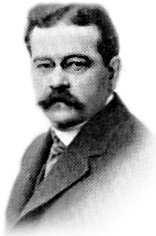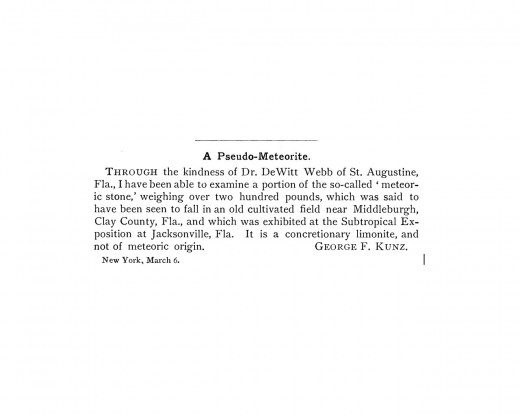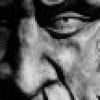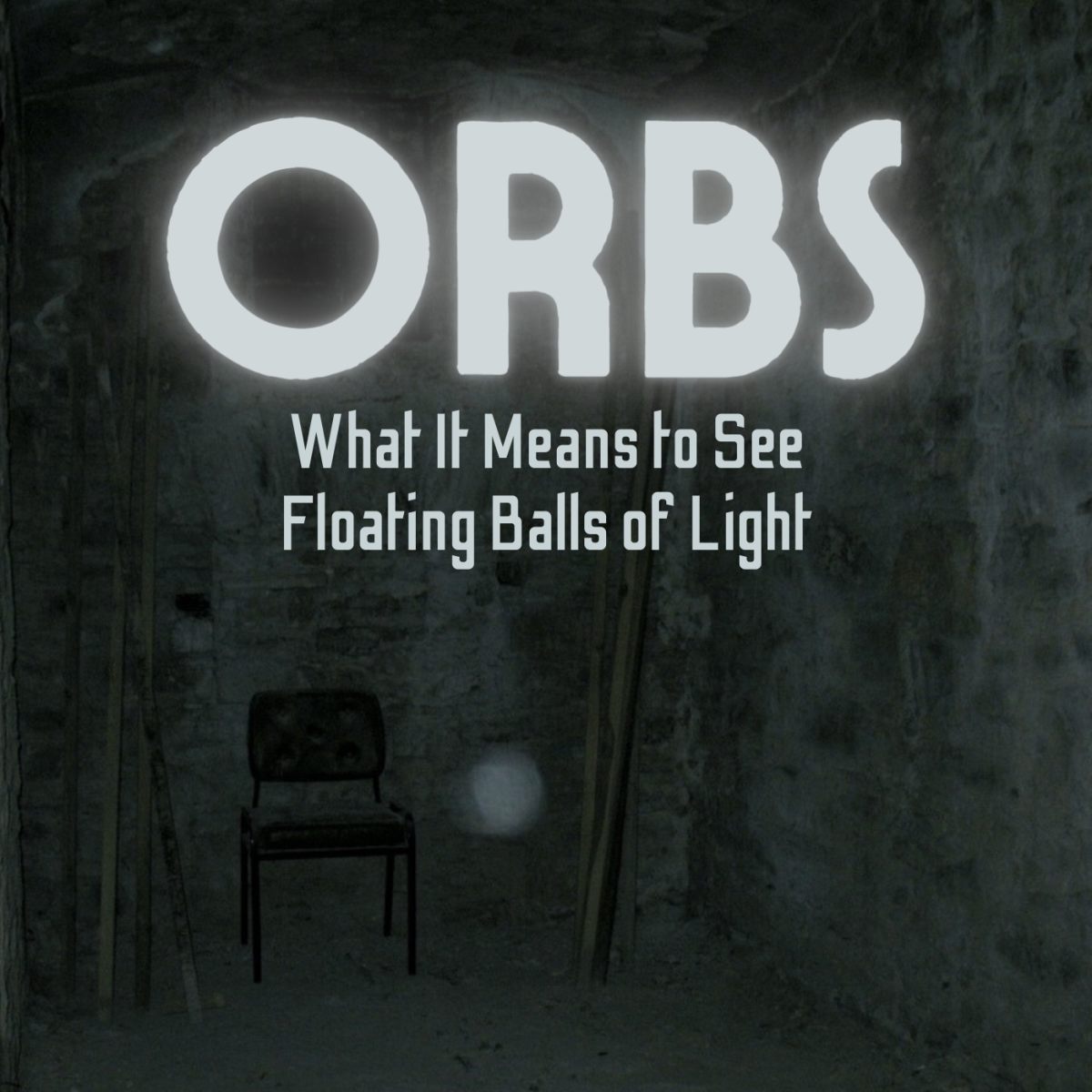People in Strange Sciences Series: Charles Fort
Shy Guy, Charles Fort

Charles Fort - Life Details
The terms "Forteana" and "Fortean" are taken right from the name of American, Charles Fort - and are descriptions on things related to what Charles Fort spent most of his life researching and writing about - "anomalous phenomena."
The late Charles Hoy Fort (August 6, 1874 – May 3, 1932) was involved with studying strange things that science mostly ignored, deemed unworthy of study or that science denied, as in denying the existence of certain objects and phenomena that science was unable to classify or explain. These items/events of study are generally termed as "anomalous phenomena," and Fort attempted to satisfy scientists by treating his objects/events or phenomena topics with scientific methodology in mind as often as possible.
As a young man, Fort was curious and intelligent and enjoyed studying things in nature, collecting shells, evidence of minerals in rocks and other materials, and he was interested in details related to birds. (Later on, his knowledge about birds would come in handy as he investigated things in the cryptozoological fields). He wasn't a good student when younger but this didn't mean he wasn't a storehouse of knowledge or that he disliked learning. He wasn't highly proficient in the standard studies - but was quite naturally witty and well read, starting from a young age.
At age 18 (in 1892), a young and adventurous Charles Fort left his native New York to travel the world and gain experience about the world. He managed to travel through and to the United states, England and Scotland and to Southern Africa, as well, but in S. Africa, around the age of 22, he was afflicted with illness and had to return home to recover more fully from malaria. Once back in the U.S., he married Anna Filing (October 26, 1896), a long-term friend throughout his childhood. Although Anna was non-literary, they shared a love of birds. Parakeets, in particular, were Anna's favourite birds and ones she had a lot of knowledge about.
The first years of Anna and Charles Fort's marriage were spent in considerable poverty. Charles Fort attempted to make ends meet while the young couple lived in the Bronx, NY, by taking on small piecework jobs of various kinds, by engaging in writing, journalism. The young Forts were so poor that they sometimes broke up their chairs to use as firewood. Charles Fort maintained his love of knowledge during this whole time, reading voraciously and making notes, and also writing 10 novels during this time. Unfortunately, Fort burned notes and novels during this time, not satisfied with their quality and content.
Fort managed to complete an autobiography called, "Many Parts," at the age of 26 (in 1900), but he still didn't manage to make his way into much successs as a writer until a combination of 'personality' and 'situation' made it possible to focus on knowledge and writing about what he truly loved to write and study about - rather than work on journalistic bits and written piecework. The personality he met at age 31 in 1905 was magazine editor, Theodore Dreiser. The 'situation' that assisted Fort was a modest inheritance when his uncle passed away in 1916. This modest inheritance allowed Fort to concentrate on writing - and focus less on poverty and barely making ends meet.
Additionally, one of his two brothers passed away in 1917, which meant that Charles and his remaining brother acquired equal shares of the deceased brother's inheritance from the still quite recently deceased uncle.
Shortly after their friendship began, Dreieser had encouraged Fort to work on the material that would become known as "Book of The Damned." Once Fort was able to write more freelyand without being under great pressures of poverty, he completed work on his Book of the Damned and Dreieser was able to get his publisher to print this book in 1919, when Fort had reached the age of about 45.
Fort continued to take notes at great length and visit libraries, locating arcane materials, old books, old and new scientific journals. When he was about 46, he suffered with a serious depression problem and - as he'd done once before when he was young and poor - he burned all his notes - about 40, 000 of them. His wife and he moved for short periods of time or at least travelled to spend time in both NY and London at times with Charles always spending great amounts of time in discourse with educated friends and in libraries doing reading, research and note-taking. After this serious bout of depression, the Forts were able to move to London for an extended period of about 8 years - during which time, Charles was very productive and landed steady employment working in the British Museum Library.
Around the year 1921, Fort's "New Lands" was published. In 1931, Fort's "Lo!" was published and a Fortean Society is formed by friends of Fort, Tiffany Thayer and Aaron Sussman.
Fort's poor health - which would overtake him very quickly - started around this time. In 1932, "Wild Talents" was completed by Charles Fort before he was admitted to Royal Hospital in Bronx, NY. He had focused his energies on the "Wild Talents" material rather than develop relationships with doctors to combat his illness, because he was thoroughly mistrusting of medical science and doctors. He was brought to the Royal Hospital because he collapsed on May 3, 1932. His publisher was able to go to the hospital to show Fort the advanced copies of "Wild Talents," so Fort died a few hours afterward - with the knowledge that his last piece of work was completed and published. Fort's cause of death was probably the disease of Leukemia.
At the time of his death, Charles Fort had more than 60,000 notes still unpublished, and
after he was interred in the Fort family plot in Albany, New York, his family donated his
notes, in full, to the New York Public Library.
Brief Biography Notes on Charles Fort at the Forteana website:
http://www.forteana.org/html/fortbiog.html#biog
**NOTE: The link above is causing a warning in my dashboard area (listed as a broken link) however, IT DOES WORK! I think the hash symbol in the link is something the software here doesn't like... don't worry about it - it's not connected to a download or anything - it just leads to the Forteana website and bio page on Fort.
BOTD (Forteans Know What This Means)
Update Winter 2013.
After putting other articles together on paranormal/unexplained topics since writing this hub, I realized just HOW OFTEN I end up having to go back to Fort's BOTD to see what's in the book.
BOTD is short for Book of the Damned (mentioned already in the hub content above).
Really, the Book is quite amazing in its coverage of strange events, beings, creatures, etc., and because of its title, (and the fact that I've been asking people, "Why haven't you read BOTD if you're interested in strange science/unexplained stuff?") I think many people have avoided reading it. In response to some questions I've asked friends and acquaintances about why they have never looked into this book, I hear a common theme: many people think it's a book about Satanism, Dark Arts/Magick or on topics related to witch-craft, demonology, etc.
With these responses in mind, I decided I should provide more details about BOTD in the hopes that the topic matter inside can become more well known and so the title doesn't cause people to veer away.
Frankly, it's a book that lists a whole bunch of things that mainstream science isn't studying or that mainstream (dare I say commercialized and consumerized science) seems to have pushed under the rug. Nothing dark, demonic, satanic about this... scary YES - for the fact that many things mentioned in BOTD are still being reported by new populations and modern individuals...and remain unexplained. In the meantime, general sciences and scientists ignore (damn, condemn) these happenings, scenarios, entities, unexplained things.
That said, let's take a better look into The Book of the Damned by Charles Hoy Fort.
The Book of the Damned - Access to the Book and General Info
The quickest, easiest place to acquire a copy of this book is in some form of eReader or PDF format from Project Gutenberg or from Manybooks.net
Simply do a title or author search and you'll find BOTD to read for free. These are free and legal download sites. Most works available from these sites are in the public domain, so you don't have to worry that you're getting something you shouldn't legally have access to.
- BOTD at Project Gutenberg - for Kindle, ePub, Plucker eReaders and some plain text files for download (no PDF version here but there's an online version to read, hosted by Project Gutenberg)
- The BOTD at Manybooks .net. Various formats available, just select PDF/Large Print PDF, Kindle, Rocketbook, Kindle, ePub, many formats here.
At Manybooks, there's even an Audiobook version available (via Libravox) - and I'm slapping my forehead silly for never accessing this before! (I am at the site listening as I compose this part of the hub).
If you don't want to download and would like to read online, this is possible, too.
Book of the Damned at Sacred Texts site or
The Book of the Damned at Resologist .net
The outline of the book:
The book is composed of 28 chapters. The PDF version I most often use has 200 pages, however, several pages are Project Gutenburg notes in this version, so really, it's not a terribly lengthy book to get through. When I checked the Amazon site for details on this book, I found that Amazon lists most hard-copy versions as having 310 pages - w/ various covers/artwork on covers.
Fort's mastery of composition isn't the greatest, so be aware of this. Examine the content details rather than the sentence structure and grammar. It seems he was an idea guy, not a grammarian! (there are some "artful" passages if you look, so don't go into the pages thinking he's a total hack - there are some extremely FUNNY passages, some satire, sarcasms that are quite priceless).
As well, Fort doesn't even try to hide his disdain for mainstream science, so you'll run into some deep, deep DIGS at popular science. If this bothers you, take a deep breath and remember that the earth was once flat, gorillas didn't exist until scientists "named" them, that the coelacanth was never extinct - oh, and that much of what science comes up with and spends hoardes of money on these days is DEADLY to us (nuclear bombs and power plants - Chernobyl, Asbestos in insulation, Teflon on our cooking and food storage items, silicone implants, etc - does science REALLY care about us??? By contrast, on the plus side for science - many positive health advancements and tech advances have been made, too (but can the average person AFFORD treatments, medicines, tools, etc?).
These two articles might help you understand why some Forteans and certainly Fort, himself, believed we shouldn't trust "science" without asking many questions and using our critical thinking:
http://www.smithsonianmag.com/science-nature/The-Ten-Most-Disturbing-Scientific-Discoveries.html
http://homegirl.hubpages.com/hub/Dangerous-inventions-we-cannot-live-without
Then again, this hub isn't primarily about general science - it's about STRANGE science, examining the unexplained and about Fort and BOTD...
Fort presents many possibilities and theories in this book. In some places, he conveys simply - IDEAS we might think on for a while. Some theories are "far out" and incomplete. The point of this book, I believe, is to "pop us out" of mainstream thinking in order to ponder over things in a new way. I have read other Fortean authors (Tiffany Thayer, John Alva Keel) who are well aware of all Fort's works who say he didn't believe everything he wrote in minute detail but he put forth different theories and ideas on things already VERY POORLY explained or else entirely ignored by science.
As well, Fort brings "things" out in the open so they can be thought about, re-examined, investigated (when people finally choose to go that far), named, corrected, etc. If these things are never mentioned (and they WON'T BE, if certain branches of science continue to dominate and have their way), they will remain unexplained.
Suspend your current beliefs while you're in the text/pages of this book. Think about the possibilities mentioned within. Go ahead and marvel that many things in the book are "far freakin' OUT THERE!" but do read! And - do let your imagination rise up to assist you. Let these ideas set for a little while before you re-frame the content back into the world you know via popular, common and mainstream science.
Inside The BOTD
Chapter One: Opens with these three lines (without the bullets I have placed here),
- "A PROCESSION of the damned.
- By the damned, I mean excluded.
- We shall have a procession of data that science has excluded."
The first 250-300 words explain what will follow in the book and the obvious reason why the book was written (to name the damned so they can be examined and possibly INCLUDED someday in peoples' and science's world).
In this first chapter, Fort manages to establish the idea (truth?) that science is NOT objective as most of us have been taught. Examples are provided for a number of situations (use your imagination) both in the realm of science and in everyday scenarios - in areas where rules and standards exist. These examples show the reader that almost everything in our world is subject to bias.
For example, some art is seen as UGLY to most or almost all kids. Some art is considered horrific and frightening for children - however the opinions and knowledge of children isn't ever honored because they're young. We don't validate that children are very capable of determining what is artful, beautiful, etc. If you look at some pieces of art, no matter what your age and WITHOUT the knowledge that a community of art scholars has deemed a certain work "an important work of art" then, indeed, some art pieces are very ugly and, perhaps, should not be called art at all. Most art that we accept needs to be "beautiful," "pretty," or at least strikingly pleasant to the eye. Ah, rules and standards, right?
Fort uses some ordinary non-science examples to just establish that many COMMON things are twisted...before he leads us into Topsy-turvy, more stringently governed areas of science (governed...with many rules like "art is pretty" - such n such is so and so or else it cannot be named as such).
Don't worry - Fort also gets into science statements about things that are questionable, too, so the first chapter isn't all allegorical. For me, here, the non-scientific example of children with art was easier for me to explain than Fort's treatment of bias in science.
Besides, I don't want to summarize the whole first chapter here - you're going to read it for yourself, anyway - right??
BOTD: Chapter 3
When reading the content in this chapter, we are made to think about the organizing and classification systems science uses. For me, this has been a really important chapter and one I recall often whenever I run into things that seem weird, unclassified, things that science seems to be de-bunking as "not valid"; creature sightings deemed to be hoaxes by the scientific community that appear to have "more to the story" than science will print/talk about.
Frankly, if science doesn't have a neat and tidy box to put a thing in so the thing can be organized into compartments, like-things, opposite-things, etc., then the un-boxed thing risks being tossed aside. If it doesn't go anywhere science already has a box set aside for it... it may get thrown in the junk room, shed, basement, closet, neighbor's yard, trash bin, landfill, etc. You get the picture.
There's also a short blurb on the validity or ridiculousness of Darwinism in this chapter, along with more details on points introduced in Chapter 2 like strange rains, yellow rain, jet-black snowflakes, black rains (reported in Ireland, 1849, 1898, 1907, Switzerland in 1911, in Scotland, Canada, England, more), red rain, mud raining down (Australia, 1902), etc. Mostly, this chapter is on rain/precipitation.
What is most ridiculous in the third chapter is that Fort doesn't try to explain these rains. Instead, he provides the (ridiculous) explanations science provided for some of the weather events and details that were printed in journals, newspapers of the time.
BOTD: Chapter 2
In this chapter, Fort takes the reader into questioning scientific "knowns" and things we're taught about from our early school years. Fort asks us to examine what our textbooks have taught us, and presents some examples of science rounding down (or sometimes up) numbers, skipping some details (omitting information that we need to know things "for sure") and sometimes making statements that are actually ridiculous instead of scientific.
Some interesting mentions are given of:
- The turtle of Vicksburg
- Rain in strange colors
- Snow in strange colors
- Stones falling from the sky
Remember that Fort is before our time so the things he was able to uncover, attempt to examine, and the accounts from people who experienced and saw strange things are all from before the 1920's. The book was published in 1919.
This chapter presents things - some minor problems in science. Don't be concerned if you feel Fort is taking on too much point form, writes like he's got A.D.D. and is all over the place (maybe he WAS afflicted with A.D.D. - did anyone check back "in those days"?) here. He's definitely all over the place but this chapter just introduces more stuff that is treated with more depth a little later on. I believe Fort lists things in quick succession to show the reader really how many things there are in the world that need explaining.
BOTD: Chapter 4
A Fall of Fish is mentioned here. Yep, you got it - fish falling from the skies! No Guff - I swear it's in here!!
No, this isn't Fort making stuff up - it was reported in the London Times, April 19, 1836. Actually, this isn't so odd an occurrence and has been reported many times since BOTD was published.
What is a little strange is - the scientific explanation for this phenomenon ("Tornadic Waterspouts"). I'll leave this open for consideration now and allow some time for for viewing the video. I'll return to this statement at the close of the hub.
Check out the vid to the right - a modern explanation of the phenomenon.
(By no means is this all that Fort talks of in Chapter 4 but you can read it for yourself)
BOTD: Chapter 5
More accounts of substances falling from the sky are in chapter 5...
...a great deal more of falling substances.
Edibles AND inedibles.
Something that is interesting in this area of text is Fort's explanation of how science often dissects things, minimizing and sectioning them down to basic parts that in no way resemble the whole. From there, science often then will make statements that the original didn't exist because a component of the whole expected to be found was missing once all the pieces were laid out to see.
Rather than put this dissected thing into a box (if a box must be used, after all) and setting it near to other boxes it has some similarities with, science often just discards what it can't fully explain.
So far, what Fort has shown us:
- In order to make an assertive statement about something, science will often propose ridiculous explanations (e.g. the earth is regarded as flat through much of recorded history/gorilla's didn't exist for science prior to the mid 19th Century - my examples, not Fort's)
- If explanations are too much trouble - dissect the thing and then call it "impossible"
Of course, this doesn't happen in ALL SCIENCE. I'm sure Fort wasn't intending to trash all of science - but I do believe he absolutely wanted readers to ask questions and refuse science where it provides explanations that are not sound - or when science sweeps things under the carpet.
Science is ONE of the pursuits used to study, classify and explain things in the world - it is NOT THE ONLY disciplines/pursuits out there. This, I think, is what is most clearly conveyed in BOTD.
BOTD: Chapter 6
Here, Fort goes into details pushed aside related with things that fell/fall from the skies with meteorites, things unable to be classified by science - along with diamonds, silver, glass, lead, sulphur - things we can identify - in independent falls or with meteorites or other known objects.
It appears that Fort is saying that a convenient explanation science gives for many things that fall from the skies is, "it came from meteorites," which may well be true - or convenient. In essence, what we're getting down to here is that science can often figure out WHAT many objects and substances are but not WHY these things fall from the skies. However, science will often expect the WHAT explanations to be sufficient and then push the WHY variables under the carpet. Some of us are very much distracted by the WHAT explanations and forget to question science further for the WHYs of things. For things not explained in the WHY category, "it was from a meteorite" is a common answer.
Mind you... if you think about... no, more than think about - if you go to the work of taking apart most "things" you can find the same substances in them, in varying degrees. For example - dogs and humans both contain water, oxygen, calcium, potassium, copper, etc and all the rest... but once we are down to all the components it is hard to see what is a dog and what is a human, no? If things are out of context and listed in their primary parts they really could be ANYTHING or any of a number of things. DO WE REALLY WANT explanations based on this process?
Fort sort of hammers out this kind of questioning of science, its methods and processes. You may need a hard hat to continue but it will be well worth your while to proceed.
Here's an excerpt from page 45 of the eBook version of BOTD:
"In [publication] Science, March 9, 1888, we read of a block of limestone, said to have fallen near Middleburg, Florida. It was exhibited at the Sub-tropical Exposition, at Jacksonville. The writer, in Science, denies that it fell from the sky. His reasoning is:
There is no limestone in the sky;
Therefore this limestone did not fall from the sky."
A portion of the article below:
Quote from Science Mag Late 1800's

Update due, November 2013
More to come by end Nov/'13








